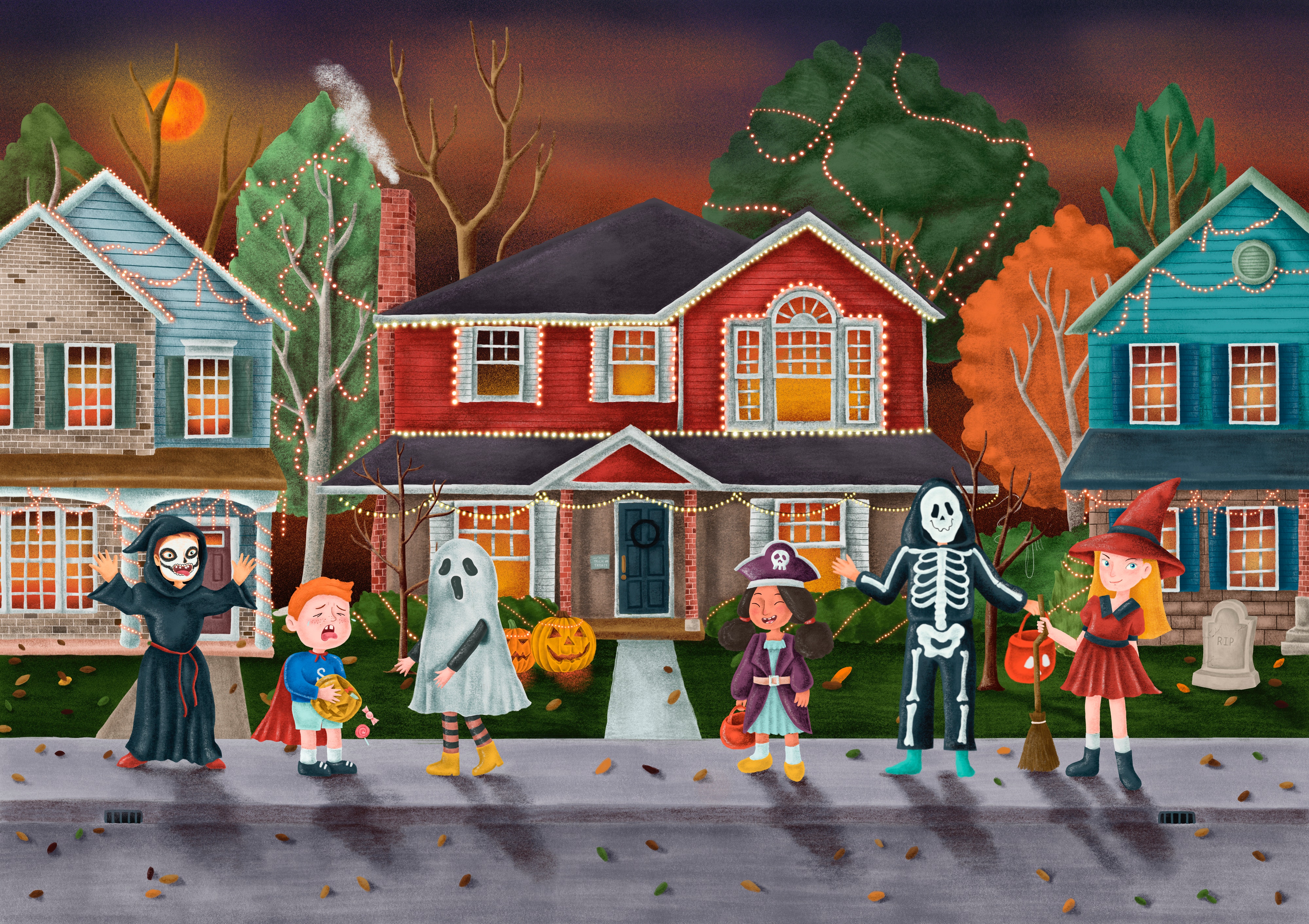It’s Halloween today and I’m going trick-or-treating with my two children. I have never done this before because the idea doesn’t excite me at all. Getting lollies and other unhealthy treats loaded with sugar from strangers for nothing? Does not make any sense…
But, this year the kids were begging me, crying that they have to go so I gave in. I tried to convince them to join a big party at a local park where other kids and adults dress up and have a BBQ followed by a massive cake but that didn’t go down at all. They have to knock on people’s houses because that’s FUN! We are only limiting our walk to 5 houses, that’s how I get around the amount of crap they get. Followed by fruit and homemade sushi…
So, if you are in a similar situation here are some tips from Harvard School of Public health to help you deal with tonight.
5 Quick Tips for Dealing with Sugary Halloween Leftovers
Halloween can be a special time of year for children, but parents may be stressed about sugar overload. Candy is intentionally excluded from the Kid’s Healthy eating Plate, but one night a year of extra sweetness is not the main problem. The concern is that the candy rarely lasts one night. Leftovers often linger, and may even find their way into your family’s lunch boxes for the next few weeks—which can create a potential new problem of your child expecting to have candy daily.
Here are 5 easy tips to help manage candy leftovers:
-
The introduction of Halloween sweets starts with the adults. Rethink how much candy you are buying. We often purchase giant bags, afraid that there will not be enough to feed the masses. More often than not, this leaves you with weeks’ worth of sweets. Estimate how many children typically visit your neighborhood and let that determine how many bags to purchase. Choose miniature-sized candies (suggestion: mini individually wrapped dark chocolate squares). Rather than allowing kids to grab candy by the handful themselves, try handing out two small candies per child. When you run out, simply turn off your house light. This is an accepted rule by all.
-
Have a non-food treat option. Kids will accept whatever is offered to them, but some may especially appreciate the choice of a fun toy instead of candy. This is also a welcome alternative for kids with food allergies. Examples are colorful stickers, pencil toppers, key chains, or friendship bracelets.
-
Consider attending a Halloween party instead of collecting candy door-to-door. Parties offered at schools and by neighbors are a great way to show off creative costumes and celebrate the holiday with your community without bringing home the dilemma of what to do with massive candy leftovers.
-
If you go door-to-door, you may wish to limit the amount of houses your child visits to avoid collecting excessive amounts of candy. Rather than having the focus be just on collecting candy, you might offer additional activities to create a whole evening of fun. Examples are to eat dinner with fall-themed recipes before heading out, and then watching a fun “spooky” film after returning home. Looking for festive dinner ideas? Try our Butternut Squash Soup or Farro with Confetti Vegetables.
-
Although it is a common practice, reconsider donating leftover candy. Excess candy often ends up at your workplace or child’s school or dentist who may then donate the leftovers to sick patients or senior community centers. If you do not need or want the candy, do your coworkers and other recipients really need them? An option is to simply throw them out. While contributing to food waste is never a good solution, no one gains health-wise by polishing off excessive leftover candy (especially as we approach the holiday season where sweets are often plentiful). If you find yourself repeatedly dealing with unwanted extra bags of candy after Halloween, seriously consider point number one above next Halloween onward!

